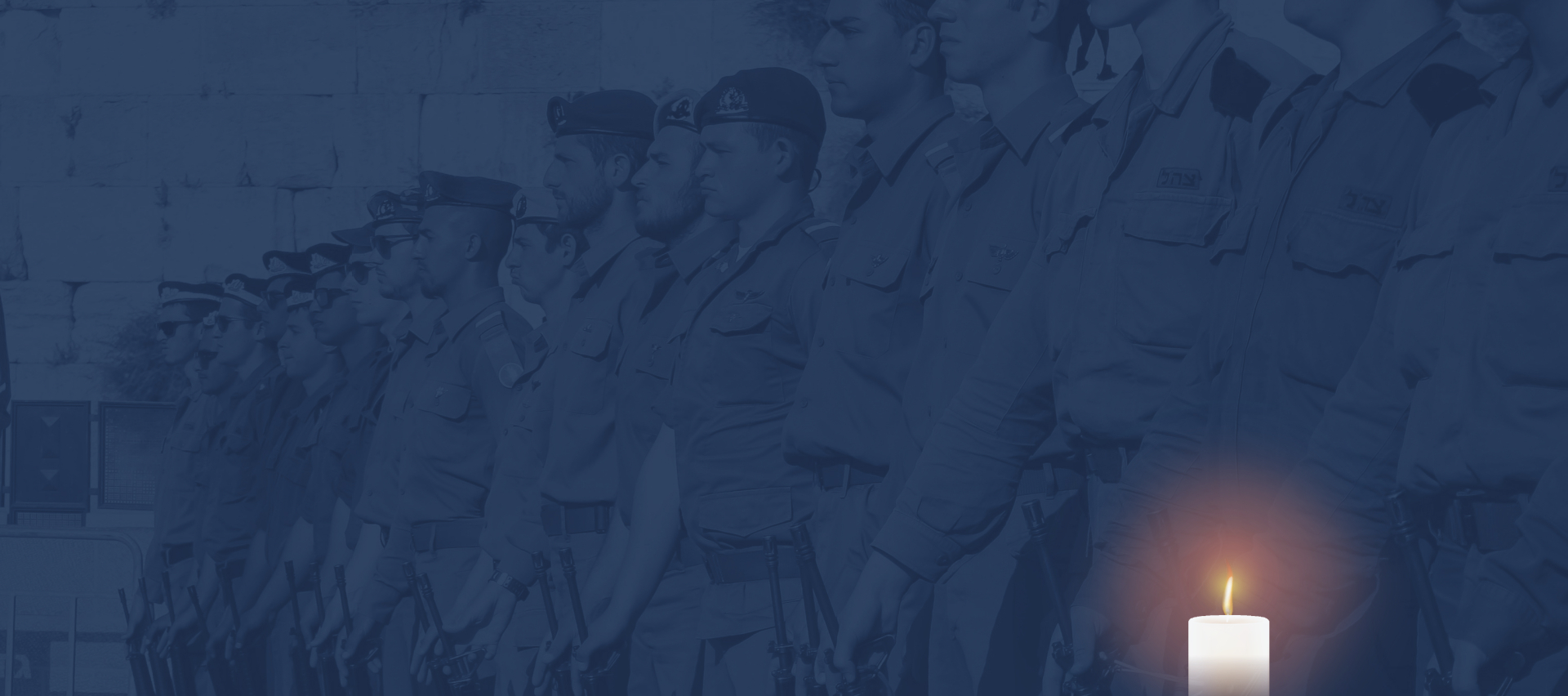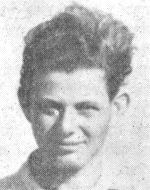,אֵ-ל מָלֵא רַחֲמִים, שׁוכֵן בַּמְּרומִים, הַמְצֵא מְנוּחָה נְכונָה
,עַל כַּנְפֵי הַשְּׁכִינָה בְּמַעֲלות קְדושִׁים, טְהורִים וְגִבּורִים
כְּזֹהַר הָרָקִיעַ מַזְהִירִים, לְנִשְׁמות חַיָּלֵי צְבָא הֲגָנָה לְיִשְׂרָאֵל



Rechnik, Ze’ev
Zeev, the son of Hilda and Isidor, was born on 30 January 1927 in Vienna, the capital of Austria, and completed his studies at the Dr. Zvi Perez Chayut School in his hometown. “Vienna was the center of Jewish education and of Hebrew literature, with the Zionist movement in its early stages, where Jews played important roles in local and world culture, including famous writers, musicians and scientists such as Ze’ev Theodor, Sigmund and Freud and Sveton Zweig. The modern Viennese anti-Semitism gained widespread support among Viennese citizens The annexation of Austria to Germany in March 1938, and the persecution of Jews in the city were extremely cruel, and in May 1938, 2,000 Jewish intellectuals were arrested and deported to the Dachau camp. Jewish community institutions provided social assistance, and took advantage of every interruptions between deportations and deportations to the emigration effort and organization of life, and the community council opened courses for vocational training and retraining, and about 45,000 students studied there. After the German invasion of Poland in September 1939, the deportation of Jews from Vienna began. In October 1,048 Polish and stateless Jews were deported to the Buchenwald concentration camp, and a group of 1,584 Jews were deported to the Nisko region. In July 1941, the deportation of the remaining 50,000 Jews began. They were deported to Theresienstadt in Czechoslovakia and to camps in the east. In 1942, Ze’ev and his comrades were transferred to the Theresienstadt concentration camp, which was to serve as a “model camp.” The Theresienstadt camp was established by the Germans to concentrate the Jews of Bohemia and Moravia, as well as Jews from Germany and Western Europe. In September 1942, 53,000 people were imprisoned there, and prisoners continued to arrive there until the end of the war. At the same time, deportations to the ghettos in Poland and the Baltic States were carried out, and from October 1942 the Jews were deported to the Auschwitz and Treblinka camps. Ze’ev was taken to Auschwitz in 1943. He was among the returnees on foot, on the death march, and safely crossed the road to Feldafing in Bavaria, Germany. The Feldfing camp, on the banks of Lake Sternberg, initially served as a camp for the Hitler Jugend, and over time became an absorption camp for survivors of the death marches in the area. Ze’ev was one of the few who got to the day of liberation. At the end of the war he returned to Vienna and immediately threw himself into the work of the Hehalutz movement. Already in the first year of his activity there he served as a member of the secretariat of the movement. He joined the “Bericha” movement, where 250,000 Jews from DP camps left Germany, Austria, and Italy to Palestine. In 1946 he immigrated to Israel via Italy in illegal immigration organized by the Haganah, and spent time with his friends from Theresienstadt in the detention camp at Shvilit. At first he settled in Givat Haim, but when he heard that the faces of his friends in the kibbutz Dorot, he decided, after a short period of time, to join them. Ze’ev was a member of Kibbutz Dorot on the southern coastal plain, and worked in the fodder industry and in ornamental gardening. Despite the hardships he experienced, he gradually became a man of work, and he gained the affection of his friends thanks to his good qualities. He was always Simcha, and he loved the beauty of life. Indicate that he was one of the few whose mannerisms and behavior expressed his pioneering. More than once, the person in his devotion and loyalty to the agriculture and his friend has been discovered during difficult times of trial, such as shutting down a broken door, treating a wounded person, and the like. “He has stood this test as a man who has long known the closeness of death and is not afraid of it,” said one of the friends. Ze’ev was in contact with some friends in Austria and America, and he hoped that one day he would be able to motivate them to come and join him.Land in general and in the agriculture in particular. When the War of Independence broke out, Ze’ev continued to fulfill all his tasks – both in defense of the agriculture and in his daily work. Like all his friends in the kibbutz and in the Negev settlements, he served in the “Negev” brigade of the Palmach, the 12th brigade of the Haganah. On October 9, 1948, on the eve of the “Yoav” operation, Egyptian aircraft bombed a large area in the Negev, The north. Among other things, four of them bombed generations, throwing two bombs from a high altitude on the kibbutz. One of them hit a wolf who did not manage to take shelter, and he was killed while carrying out his duties. He was twenty-one when he fell. He was laid to rest in the cemetery in his kibbutz. In his memory, his friend Chava Kochavi wrote: “Dear Willi, I am writing to you, twenty years after we exchanged the last words between us, these were everyday words: ‘I will wait for you’ and I answered ‘No, no, go to the shelter’ or ‘ As soon as I was wounded, I asked about you, answered what they said, and it took almost a whole week, until I recovered a little, and when I asked, ‘Is it true that Willie is dead?’ I had a silence for a reply, and if the statue was to ask what it should symbolize, I would answer without hesitation: the common friend, I met you in 1939 at the Jewish school in Vienna as a seventh grade student, taller than the others. They were making you the object of clowning and even ridicule on the part of our classmates, but you did not hold a grudge against them – I still hear your boisterous laughter at the sound of a good prank, and the two of us brought us to the Theresienstadt ghetto. Here, in stressful conditions, your characteristic traits were conspicuous: a person who is always willing to do for others, without a personal account, and even if it is caused by this It was an adolescent act of heroism, when you often gave up your meager food for another friend whom you thought needed more.was not happier than you, if you could bring some potatoes home and donate them to the communal coffers After two years in the ghetto we were separated, sent to Auschwitz, and from there to each other, and I met you again only in the summer of 1946. From letters of friends I knew that you returned to Vienna after the war , And you are going to make aliya to Israel. Through Italy you first reached Givat Haim, and from there you came to us. You came as a member of an almost new kibbutz, many of whose members were older than you for many years. It was certainly not easy for you to integrate, but I never heard a complaint from you. You worked in the fodder industry, but if a night guard was needed and no other was found, the sorter knew that he could contact you and would not be rejected; And if you have to unload a car – you will not refuse. But it is only a short time that you can be a member of generations. The War of Independence came upon us and you, like the others, worked in the fortifications, guarding and observation. At the beginning of autumn the second truce came and the sirens were silent. It was Saturday and we were going to the dining room for breakfast. Suddenly we saw four Spitfires in the sky, and we heard an alarm. You are twenty-one years old in your death, only twenty-one years old … But we are here in the generations that continue, as you wished to do, continue despite the sacrifices. “Ze’ev was immortalized in the booklet” Generations, “The Last Martyrs” are Holocaust survivors(Parents, brothers, sisters, sons and daughters), who experienced the Holocaust in the ghettos and / or concentration and extermination camps and / or in flight and hiding in territories occupied by the Nazis and / or fighting alongside members of the underground or partisans in the territories The Nazi occupation that came to Israel, during or after World War II, wore uniforms and fell in the Israeli army.

